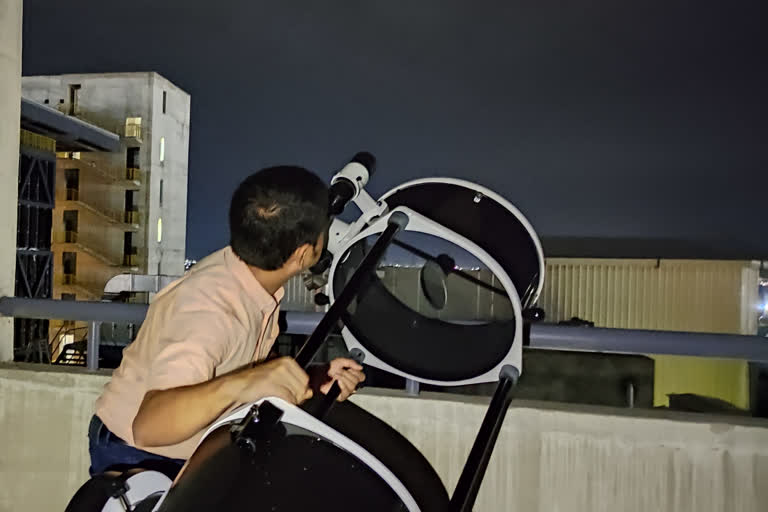Hyderabad: IIT Hyderabad has established its first astronomical observatory with a large telescope for public outreach. The telescope, due to its immense size, will not only allow amateur astronomical observations including deep sky objects, planetary systems, stars, and nebulae but also provide research quality images with potential discoveries.
As a first step towards starting astronomical activities as well as a students' training programme, a large telescope facility has been established in the IITH campus. The telescope is equipped with a huge mirror with an optical diameter of 355 mm (the second largest among IITs after IIT Kanpur) with a focal length of 1650 mm. Such a large mirror along with a Crayford focuser and elegant truss tube design will enable observation of the deep sky and faint objects which is not possible to detect with a small telescope.
Small craters on the lunar surface, rings of Saturn are some of the small features that can be resolved with the telescope. An advanced digital camera will be used to record images and transient astronomical phenomena like meteor showers. Although the telescope would primarily aim for the outreach and night sky observational training programmes, it has the capabilities of delivering research level performance which will be explored subsequently.
Also read:Hubble telescope on halt after trouble with payload computer: NASA
“The enthusiasm and the curiosity of young students about objects in the sky are limitless," IITH Director Prof BS Murty said. "With this large telescope, we will provide them an opportunity to study celestial objects in greater detail than other small telescopes conventionally used for outreach programmes. Activities like stargazing training programmes, observing astronomical transients, working with celestial images will enhance their knowledge and add to their sense of human connection with space. We would also ensure that students from schools and various colleges in and around Hyderabad also get the advantage of this large telescope through various programmes organized by the Astronomy Club of IITH.”
Due to its superior quality images, the data from the observatory may serve the national and international astronomical researchers by supplying supportive data. Such collaboration will provide a rare opportunity for the facility to become a part of the international observatory community so that IITH can be a part of major astronomical discoveries and become a recognised centre for astronomy in India.
